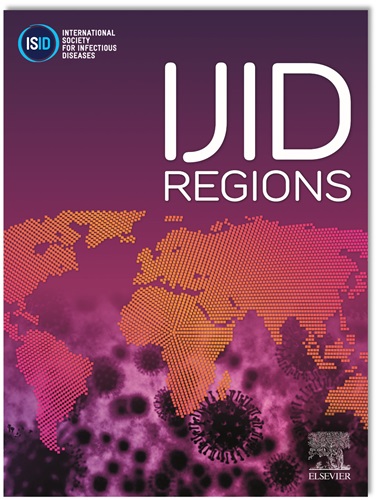Diagnostic tests for tuberculosis infection and predictive indicators of disease progression: Utilizing host and pathogen biomarkers to enhance the tuberculosis elimination strategies
IF 4.8
2区 医学
Q1 INFECTIOUS DISEASES
引用次数: 0
Abstract
Tuberculosis (TB) remains the leading cause of death worldwide from a single infectious disease. An estimated quarter of the world's population, about 2 billion people, has an immune response to Mycobacterium tuberculosis (Mtb) without clinical, microbiological, or radiological signs of TB disease. This condition is known as TB infection (TBI) and carries a lifelong risk of reactivation with 5%-10% of individuals eventually developing TB disease during their lifetime. Interferon-γ release assay and skin-tests are World Health Organization (WHO)-approved tests for TBI diagnosis and allow to identify those needing TB preventive therapy. The WHO End TB Strategy proposes several approaches to mitigate the global burden of TB. Achieving the goal of TB elimination requires improved early diagnosis of TBI individuals at risk of developing TB disease, provision of preventive therapy, and development of new diagnostic tests to address the current limitations. This review provides an update on the tests currently used for TBI diagnosis and offers an overview of experimental tests based on either host response analysis or pathogen detection. Additionally, we briefly report experimental tests, such as those based on host RNA signatures, which can help identifying TBI individuals at high risk of progressing toward TB disease. Although these experimental tests show promise, further investigation and randomized clinical trials are required to establish reliable proof-of-concept.
结核病感染的诊断测试和疾病进展的预测指标:利用宿主和病原体生物标志物加强结核病消除策略
结核病(TB)仍然是全球单一传染病致死的主要原因。据估计,全球有四分之一的人口(约 20 亿人)对结核杆菌有免疫反应,但没有结核病的临床、微生物学或放射学症状。这种情况被称为肺结核感染(TBI),有终生再激活的风险,5%-10% 的人在一生中最终会患上肺结核病。IGRA 和皮试是世界卫生组织(WHO)批准用于 TBI 诊断的检测方法,可以确定哪些人需要接受结核病预防治疗。世界卫生组织终结结核病战略提出了几种减轻全球结核病负担的方法。要实现消除结核病的目标,就必须改进对有可能患上结核病的 TBI 患者的早期诊断,提供预防性治疗,并开发新的诊断检测来解决目前的局限性。本综述介绍了目前用于结核病诊断的最新检测方法,并概述了基于宿主反应分析或病原体检测的实验性检测方法。此外,我们还简要报告了一些实验性检测方法,如基于宿主 RNA 特征的检测方法,这些方法有助于识别结核病进展风险较高的创伤性脑损伤患者。尽管这些实验性检测显示出了前景,但要建立可靠的概念验证,还需要进一步的调查和随机临床试验。
本文章由计算机程序翻译,如有差异,请以英文原文为准。
求助全文
约1分钟内获得全文
求助全文
来源期刊
CiteScore
18.90
自引率
2.40%
发文量
1020
审稿时长
30 days
期刊介绍:
International Journal of Infectious Diseases (IJID)
Publisher: International Society for Infectious Diseases
Publication Frequency: Monthly
Type: Peer-reviewed, Open Access
Scope:
Publishes original clinical and laboratory-based research.
Reports clinical trials, reviews, and some case reports.
Focuses on epidemiology, clinical diagnosis, treatment, and control of infectious diseases.
Emphasizes diseases common in under-resourced countries.

 求助内容:
求助内容: 应助结果提醒方式:
应助结果提醒方式:


